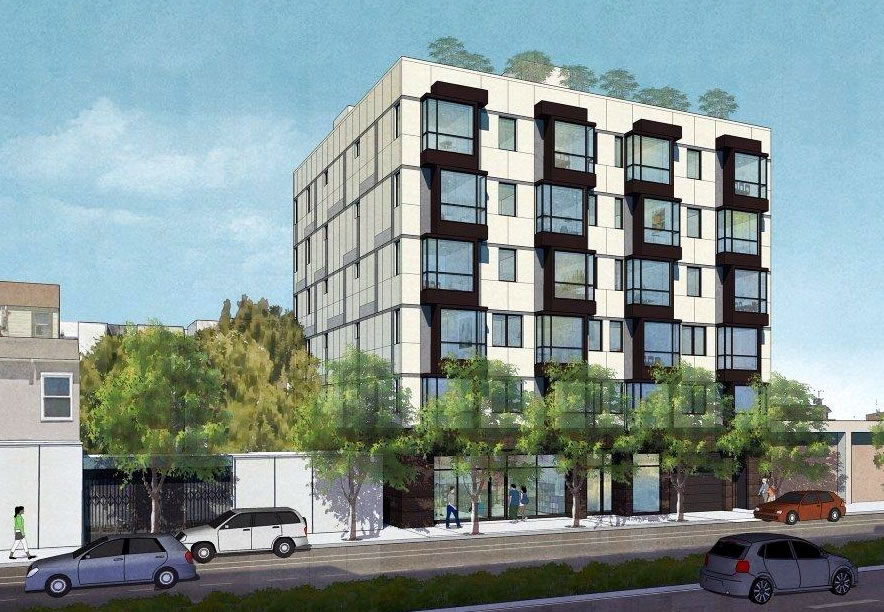As we first reported earlier this year:
Approved for a 24-unit development to rise up to six stories in height on the Mission District site, with 20 two-bedrooms and 4 one-bedrooms over a 761 square foot retail space and a garage for six cars, the 3620 Cesar Chavez Street parcel and plans are now on the market with an $8 million price tag.
Not including the commercial space, the asking price works out to roughly $333K per buildable unit, a sale at which would be a near-record-setting price (for the neighborhood) and significantly above the going average rate while new construction pricing and sales are on the decline.
As we also noted at the time, the paperwork to secure the required building permits has already been filed.
And yesterday, the asking price for the 3620 Cesar Chavez Street parcel and plans was reduced by $2.1 million (26 percent) to $5.9 million or roughly $246K per buildable unit.
At the same time, the aforementioned record-setting building site on 16th Street is now back on the market as well having failed to break ground.

Any have an idea what the actual construction cost per unit is?
Seems like the market has revealed an overpriced property as overpriced.
What should we take away from this story?
“What should we take away from this story?”
That the property wouldn’t have been overpriced at the height of the bubble, but that it is overpriced now that the bubble is deflating? How’s that?
Sounds about right. The fact that it’s not a one-off helps to confirm.
“Wouldn’t have been overpriced at the height of the bubble.”
But again, it was overpriced. It didn’t sell. So this must be a bubble where overpriced properties don’t sell? What kind of bubble is that?
Are you just being a smartass, or do you really not understand the difference between an inflating bubble and a deflating bubble?
Asking a near record setting price per buildable unit, in a market where new condo prices have dropped 10% plus, was a Hail Mary that didn’t have a prayer.
Given that condo prices will likely remain flat/decline for the medium term future, I’d suspect that entitled projects will be less appealing to potential investors than non-entitled parcels – because the entitlement is for a limited time (usually for three years) before it lapses. Paying a premium for an entitlement knowing that starting construction during the entitlement window might not be financially viable makes for a dubious investment.,
Also, your rhetorical arsenal would be well served if you moved beyond simple circular reasoning and tautology.
Land is much more volatile in price than built property, as it’s really just an option to have a building. For instance, assume it costs $50 million to build a building that once built is worth $60 million. The land is worth about $10 million. But, if the building value falls by 10%, or $6 million, now the land is only worth $4 million.